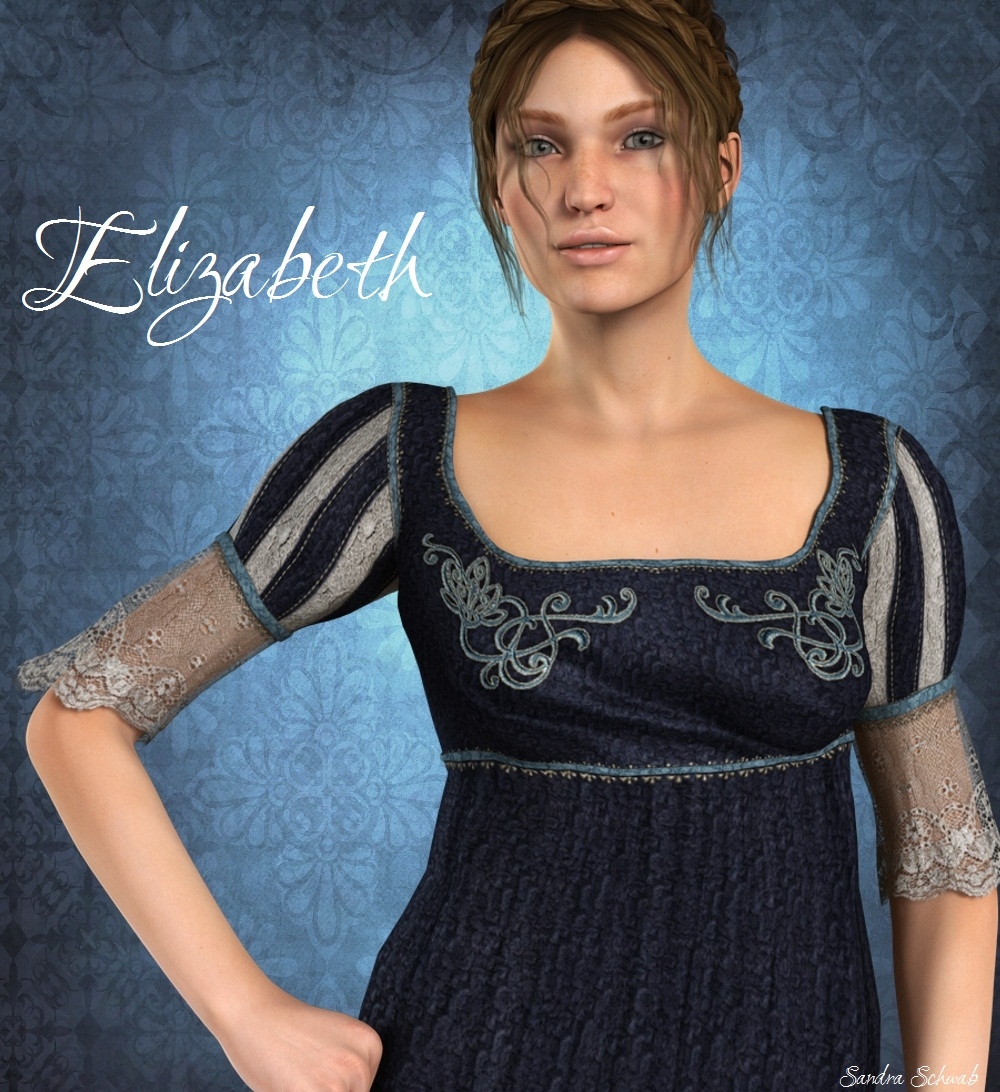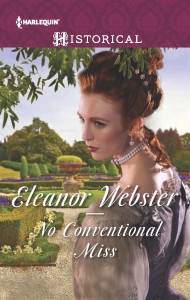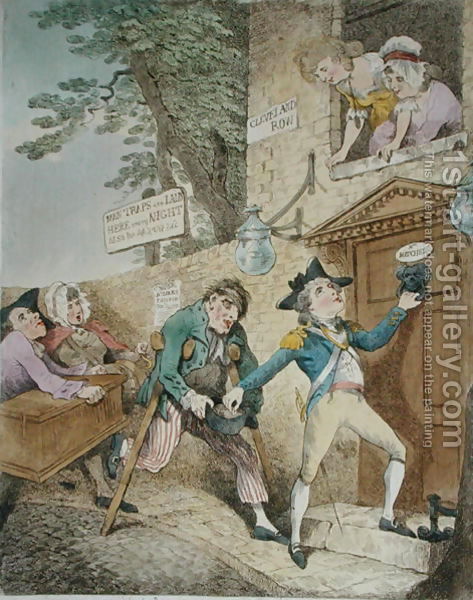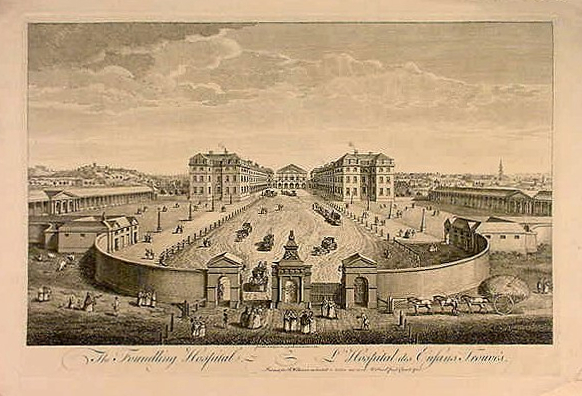You are the winner of a signed copy of Eleanor Webster’s No Conventional Miss!
Look for an email from Diane asking for your address.
The Riskies

Yesterday was release day for A TASTE OF SCANDAL, a multi-author box set I contributed to. Indeed, even the cover is so scandalous that Facebook wouldn’t let one of us boost her “Hooray! New release! With pretty new cover!!!” post. Because, you see, you can plainly discern a man’s neikkid back and shoulder. *gasp*
And biceps!
Let’s not forget that lovely biceps!!! *pats screen*
(I do hope you’re keeping your smelling salts nearby in case you’re overcome by so much scandalous scandalousness!)
And here’s is the scandalous blurb:
Heat up your history with eight amazing novels from USA Today bestselling authors and brand new voices [and, well, me] in this box set! From Regency ballrooms to Victorian bedrooms [and garden follies adorned by giant stone pineapples!!!] [how could you possibly resist those stone pineapples?!!?], there’s something here for every lover of steamy, sexy historical romance. Scottish highlanders, noble spies, and witty aristocrats use humor, wits, and intrigue to get whatever — and whoever — they desire. But these daring heroes meet their match when they encounter bewitching beauties who want more than just a taste of scandal…
(In case you wonder: the fabulous Elizabeth Cole aka the mastermind behind this box set wrote the blurb. Now I just need to find out how I can get her to write all my future blurbs.)
If you don’t quite know how to become properly scandalous yourself, never fear: We have assembled a list of handy tips from some of our heroes & heroines on how to be truly scandalous. Let’s start with a bit of a garden theme:
 “If you suspect a beautiful, unmarried woman is a spy, lead her to a dark garden where you can kiss her senseless while discovering whether she has hidden assets.” ~ Sebastien Thorne from A HEARTLESS DESIGN by Elizabeth Cole
“If you suspect a beautiful, unmarried woman is a spy, lead her to a dark garden where you can kiss her senseless while discovering whether she has hidden assets.” ~ Sebastien Thorne from A HEARTLESS DESIGN by Elizabeth Cole
“Garden follies (even those adorned by giant stone pineapples!) are most wonderfully suitable for seduction.” ~ Sebastian “Fox” Stapleton from BEWITCHED by Sandra Schwab
For our next tip, you don’t need a garden, but having a brother is kind of essential:
“Blame everything on your roguish brother so that your darkest secret will never be revealed to the woman you love.” ~ Patrick Rochester from DARK PERSUASION by Vicki Hopkins
So far, our list might lead you to think that only romance heroes have scandal on their minds. But nothing could be further from the truth! So let’s hear from two of our heroines:
 “The easiest way to get one’s self married is to make a man dizzy with desire. And not let him get undizzy until after the wedding.” ~ Elinor from TO WED THE WIDOW by Megan Bryce
“The easiest way to get one’s self married is to make a man dizzy with desire. And not let him get undizzy until after the wedding.” ~ Elinor from TO WED THE WIDOW by Megan Bryce
The next one is my personal favorite. It’s a great line to use when you have to deal with a stubborn or annoying hero:
“I don’t think I could kill you, even though you deserve it. They would probably behead me at the Tower if I murdered a duke.” ~ Elizabeth from EDUCATING ELIZABETH by Kate Pearce

If you want to find out about all the scandalous things that happen in A TASTE OF SCANDAL, you can pick up your copy for just 99 cents at the following sites:
Amazon US | Amazon UK | Amazon CA | Apple itunes | Kobo
And now let’s hear from you: What is the best scandalous thing you’ve ever encountered in a romance novel?
Leave a comment for a chance to win a signed copy of the very first edition of BEWITCHED (yes, that would be the old Dorchester edition from 2008) (and yes, I still have a few brand new copies of that edition), my contribution to the box set. I’m going to pick a winner (randomly chosen) on Sunday, 11 October.
 I love to feature new authors! I love it so much I gave up my blogging day to tell you about No Conventional Miss by Eleanor Webster. No Conventional Miss is Eleanor’s first published book and I’m delighted Harlequin Historical took her on! You see, Harlequin Historical has tended to back away from paranormal elements in their line, but they’ve taken the plunge with No Conventional Miss!
I love to feature new authors! I love it so much I gave up my blogging day to tell you about No Conventional Miss by Eleanor Webster. No Conventional Miss is Eleanor’s first published book and I’m delighted Harlequin Historical took her on! You see, Harlequin Historical has tended to back away from paranormal elements in their line, but they’ve taken the plunge with No Conventional Miss!
Here’s the backcover blurb for the book:
She’s always been different…
Amaryllis Gibson is an unlikely debutante. She favors fact over fashion, cares not for “proper” conversation and is haunted by ghostly visions which could land her in the madhouse! Marriage is definitely the last thing on Rilla’s mind…
But when she’s caught in a compromising position with Viscount Wyburn, suddenly she finds herself betrothed! And worse, his powerful presence only increases her visions. By shedding light on the viscount’s past, can Rilla gain his trust and win him round to her more…unconventional traits?
 And some Goodreads reviews!
And some Goodreads reviews!
“…the perfect book to read at Hallowe’en if you like just a touch of spookiness mixed in with your historical romance.”
“…well-researched and emotionally gripping.”
“The author has spun a tale which kept my attention from beginning to end.”
Eleanor has generously agreed to give away a signed copy of No Conventional Miss to one lucky, chosen-at-random commenter from North America or the UK.
So here she is! Welcome, Eleanor!
Tell us about No Conventional Miss?
Thank you for inviting me to Risky Regencies, Diane.
The protagonist, Rilla, is a fascinating and unusual character. She is an inventor. She has a keen interest in force, momentum and any number of ‘unladylike’ activities. However, she has always been plagued with moments of second sight and rejects this aspect of herself. Indeed, a maternal aunt had been institutionalized for similar traits. A part of Rilla’s interest in the scientific is that this will serve to subdue that mystic element within her nature.
Paul is also conflicted. He believes love to be destructive based on his mother’s suicide which he thinks was caused by his parents’ unhappy marriage. Therefore, he has little interest in marriage and even less in love.
But a scandal forces the match and Rilla faces her greatest fear as she is increasingly haunted by Paul’s mother’s ghost,
The question is; can Paul and Rilla work through these challenges and achieve acceptance of self and each other or will these challenges destroy them?
This is your first book! Tell us about your writing journey and “The Call”.
My writing journey has been long, like two decades! I’m a multi-tasker which has both positive and negative aspects. I believe that one seldom has sufficient time to properly commit to one’s long term goals and, if one waits for that perfect moment, one can procrastinate into ‘never’. Therefore, each day I put aside time, however small, to write,
The downside – it took 18 years. On the flipside, I eventually made it.
‘The call’ felt surreal. I live in Canada and my editor is in England, so we had to communicate via e-mail to ensure that it wouldn’t happen at 2 a.m. Therefore, I had a good idea what was coming!
However, I believe I had quite the mega-grin at my day job that morning.
What is risky about No Conventional Miss?
No Conventional Miss is a departure from the traditional Harlequin historical because it involves a paranormal element. In fact, I was advised somewhere along my journey to remove that element from the plot as it did not fit with the traditional regency.
I have gladly accepted a lot of feedback during this journey. It is how I have learned and grown as a writer. However, this did not feel right and, although I knew it kindly meant and from a knowledgeable source, I chose not to take it. I felt that to remove it would take away that spark. In any element of life, it is a risk and takes courage to know when to take feedback and when to follow one’s own path.
Did you come across any interesting research when writing your book?
Yes, absolutely! As I described Rilla’s inventions, I wondered whether any ‘real-life’ Regency woman might be similar to Rilla. Then I found Sarah Guppy (1770-1852). Sarah was born in Birmingham and patented numerous designs. Indeed, she achieved considerable financial success, earning a contract from the British Navy worth £40,000 for a device to prevent the growth of barnacles on ships. And then there is my personal favorite; Sarah’s invention of a tea or coffee urn which also cooked eggs and warmed toast.
What is next for you?
I have a two book contract with Harlequin so a second book will be released at some point… This is set slightly earlier with the backdrop of the French Revolution.
And now a question for the readers–If you could chat with any Regency hero or heroine from any book, who would you choose and why?
Answer the question or just make a comment and you’ll be in the running for a signed copy of No Conventional Miss! (selection will be made after midnight Weds, Oct. 7)
 I have a “wish list’ of charities I’d like to support if I ever won the lottery. Do you? What kinds of causes do you like to support? I’m gearing up to host a fund-raising event (on Facebook) for a friend who is on the national kidney transplant waiting list (more about that later), and it made me think about subscriptions and charitable associations and fund-raising events the way they worked in the Regency. The concept of computers, the Internet, and a place called Facebook where people from all over the country –the world– could gather “virtually” for a pretend party would really blow the mind of someone from our favorite era!
I have a “wish list’ of charities I’d like to support if I ever won the lottery. Do you? What kinds of causes do you like to support? I’m gearing up to host a fund-raising event (on Facebook) for a friend who is on the national kidney transplant waiting list (more about that later), and it made me think about subscriptions and charitable associations and fund-raising events the way they worked in the Regency. The concept of computers, the Internet, and a place called Facebook where people from all over the country –the world– could gather “virtually” for a pretend party would really blow the mind of someone from our favorite era!
Naturally, as soon as I started to delve into this topic, I realized how huge it was. So many different threads, so much information. Where even to start the conversation? So I thought about our stories, the ones we love to read and write. How often have you read (or written) characters who were engaged in supporting or championing some charitable cause? Have you come across, or written, characters who are attending events for charity as part of their London season? Or attending meetings of a philanthropical association? I certainly have read books where this is the case, but I don’t feel as though I see it often.
I think in very general terms modern society has shifted away from the kind of “giving” mindset that prevailed in Regency times, and that philanthropy is not as fundamental to our daily lives as it was then. We have higher expectations of what our tax dollars should accomplish through the government, we have “lost the religious underpinnings of society”, as one scholar put it, that helped make charity a priority, and we have a society now where a majority of women work at jobs outside the home, which robs them of the time to be actively involved in charitable works. Does that make it harder for us to imagine a world where this was not the case? 
I’m talking in broad generalities, of course. But in the Regency, supporting charitable causes was much more personal, more “hands-on”, if you will. The mail was too expensive to be used to send out appeals, and of course there weren’t any telemarketers badgering people to give. (Hmm, think of that!) But there were a variety of other ways one’s generosity would be solicited.
Your local church (or I assume, the synagogues as well) would present you with causes and solicit your support. I’ve been reading Woodforde’s Diary of a Country Parson and was impressed, as he was, by the generosity of even his poor parishioners who dutifully would contribute pence whenever he put forward a need during the Sunday sermon. You might be accosted on the streets by beggars, although by the Regency there were more institutions in place to help or relocate them. And of course, your friends might beg you to support whatever cause had caught their attention, through a subscription or attendance at an event. (Getting back onto more familiar ground!)
 Besides these types of what is called “casual charity”, there was organized giving. This includes giving of alms, paying the poor rate tax (set up by the Elizabethan Poor Law of 1601, administered by the parishes and based on land and buildings, it funded the workhouses –“indoor charity”—and “outdoor charity” such as the dole, clothing, and food, among other things), or supporting any number of philanthropic organizations and associations. Bequest charities administered by parishes and guilds had a long history, but “associational charity” began to grow in the middle of the 18th century after it became illegal to establish charitable trusts through a will at death.
Besides these types of what is called “casual charity”, there was organized giving. This includes giving of alms, paying the poor rate tax (set up by the Elizabethan Poor Law of 1601, administered by the parishes and based on land and buildings, it funded the workhouses –“indoor charity”—and “outdoor charity” such as the dole, clothing, and food, among other things), or supporting any number of philanthropic organizations and associations. Bequest charities administered by parishes and guilds had a long history, but “associational charity” began to grow in the middle of the 18th century after it became illegal to establish charitable trusts through a will at death.
 The famous Foundling Hospital was the first of these new kinds of socially active charitable foundations. The Marine Society (which placed poor adolescent boys into careers at sea), and The Magdalen Hospital for Penitent Prostitutes soon followed, and then many more, focused on particular social problems, and dependent on public support. Annual subscriptions, publicity campaigns through pamphleteering, and charity events including concerts and balls were all employed. Some societies levied a weekly fee on members to support their work. Medical charity took on a new approach, too, with the establishment of charity hospitals, dispensaries, and asylums. As we see so often, these changes were the beginning of a more modern way of thinking and doing, well established by the Regency period. There’s a great article here.
The famous Foundling Hospital was the first of these new kinds of socially active charitable foundations. The Marine Society (which placed poor adolescent boys into careers at sea), and The Magdalen Hospital for Penitent Prostitutes soon followed, and then many more, focused on particular social problems, and dependent on public support. Annual subscriptions, publicity campaigns through pamphleteering, and charity events including concerts and balls were all employed. Some societies levied a weekly fee on members to support their work. Medical charity took on a new approach, too, with the establishment of charity hospitals, dispensaries, and asylums. As we see so often, these changes were the beginning of a more modern way of thinking and doing, well established by the Regency period. There’s a great article here.
I tackled this topic because on October 30 I am hosting a “virtual” Halloween Party on Facebook, and any of you who are reading this (and are Facebook members) are invited! It’s going to run 4pm-midnight (Eastern) so you can drop in at any time. It is a fund-raising event, so I am asking people to donate $15 –or whatever amount they wish – to my friend’s fund at the Help Hope Live Foundation. (Her name is Joyce Bourque). If you would like to come to the party, you can send me a “friend” request (Gail Eastwood-Author) or drop me an email, or I think you can just find the event page I will be setting up and ask to be invited in. (I think we’re calling it “Virtual Halloween Party for Joyce Bourque’s Kidney Fund” and I hope to have it set up this weekend!) I am also going to set up a dedicated email address where non-FB folks can leave Joyce a message of support or Halloween wishes. As you may –or may not—know, people who are on transplant waiting lists are required to do fund-raising while they wait, every year. These folks have to show that they can cover their part of the cost to save their lives, or be dropped from the list. Foundations like Help Hope Live are designed to hold and manage the funds until they are needed. Here’s a link to the foundation: https://helphopelive.org and here’s a link to Joyce’s page there, if you’d like to “meet” her! If you like, you can pretend her page is a handbill that I passed to you when I stopped in for tea! J
Meanwhile, let’s chat about whether charity giving belongs in Regency romances or not. What do you think? Please comment below.
Jenny Crusie has a great piece of advice for writers: “Don’t look down.” Meaning, don’t stop writing to worry about details or character arc or research.
I am not capable of following this advice. And I’m not saying it’s efficient, but it works for me: my writing is constantly enriched because I stopped to research. Scenes take fresh and exciting directions, I learn new things about my characters, and I understand more about the context in which the scene is taking place. I once stopped writing for two hours while trying to answer the question “Were there wastepaper baskets or equivalent in the Regency?” because my hero’s mother had to do something with her apple core. (Short answer: no, because very little was thrown away.)
While writing my current WIP (about a young woman who co-owns a gaming den with a 1790s theme), I’ve come across a startling number of amazing objects. So I thought I’d share ten supercool scraps of Regency and late–eighteenth century material culture with you this week!
(When links go to Pinterest, in most cases if you click again on the image, it will take you to the original website from which the image was pinned and you can read more about the item.)
1. Earrings in the shape of the guillotine, with Louis XIV’s head dangling underneath. 1790s.
2. In England, what we call “Solitaire” is called “Patience.” And it wasn’t really that popular yet in the Regency. What they called “Solitaire” was this lovely brain-teaser game with pegs. Researching this online is very difficult because it’s a big deal in game theory so all the websites are written by mathematicians, not historians. I found a website where I can play a virtual version, and it really is addictive!
3. Roulette was not yet played in England during the Regency (although it existed in France). Variants called roly-poly and E.O. (standing for Even and Odd) were, though. E.O. was originally designed in the 1730s to exploit a loophole in anti-gambling legislation, but was quickly outlawed itself. Despite that, it remained very popular! You can see an E.O. wheel here, and this 1786 Rowlandson engraving shows one in use.

“The W__st_r [Westminster] JUST-ASSES a Braying, or The downfall of the E.O. Table” by Gillray, 1782. This political cartoon presumably has something to do with gaming laws, but I don’t know what! The subtitle reads “NB: the Jack-Asses are to be indemnified for all the mischief they do, by the Bulls and Bears of the City.” Image via Wikimedia Commons.
4. Playing card decks are different throughout Europe! Did everyone know this but me? The deck we use in the States (52 cards, using hearts, clubs, spades and diamonds as suits) is the French deck. Spanish decks use the suits cups, coins, swords, and batons or sticks—familiar to me from Tarot decks! Furthermore, the pip cards only go to nine, so a full deck is 48 cards (or 50 with jokers), not 52. German decks use acorns, leaves, hearts and bells for their suits. So cute!
Portugal used to have their own pattern, but they switched to French decks sometime in the first half of the 20th century. (The transition left some idiosyncrasies; for example, the old face cards were King, Knight, and Page, but the pages were female! So “page” was mapped to “queen” on the new decks and many games rank the cards King-Jack-Queen.)
I tried especially to find examples of Portuguese decks and card games since my heroine is Portuguese. I haven’t found much yet except that the aces have dragons on them, and that modern Japanese karuta decks are based on decks brought by Portuguese traders in the 16th century. But I’ve got a request in to interlibrary loan…
Look at this great 19th century deck design.
5. More cards: in Revolutionary France, it was pretty retro to use decks with court cards! New decks were designed, sans royalty. I found some beautiful examples, like this one where the court cards depict the Seasons, the four Elements, and some Revolutionary virtues!

Deck of Revolutionary cards, depicting great men (Solo, Plato, Cato, and Brutus) and the cardinal virtues. Image via Wikimedia Commons.
I also love this set (the queen of spades is a personnification of “Freedom of Marriage”, holding a sceptre labeled “Divorce”—divorce was briefly legal and widely available under the Revolution) and this one (in which the jacks are Republican citizens, the queens are the cardinal virtues, and the kings are philosophers)!
I almost bought this reproduction deck on Etsy until I realized I’d have to pay for shipping from France…
6. Another Regency card trend: transformation cards! The site links to many examples and explains: “Transformation Playing Cards are those in which the pip cards have been integrated into an overall design thereby ‘transforming’ the playing card into a miniature graphic artwork. The pips must retain their traditional position and shape, so it is sometimes difficult to create a good design. The idea became popular at the beginning of the 19th century as a pastime, when packs were often ‘transformed’ by hand using pen and ink.” It’s this transforming by hand that intrigues me most—wouldn’t that be a great scene or subplot in a romance? (Warning before clicking the link: racial caricatures.)
7. Regency folk did not use poker chips, but “fish”! Fish looked like little fish (no surprises there!) and were commonly carved out of ivory, bone, or mother of pearl.
8. Moving on from gambling, using a segue of stuff carved out of ivory: the renter of a box at the opera received six ivory tickets engraved with their box number and (sometimes? always? not sure) their name. They could give out (or sell) whichever of these tickets they weren’t using themselves to friends, which were good either for admission to their box or for seats in the pit. (I don’t totally understand the logistics of this ticket sharing, TBH, and two editions of the same traveler’s guide to London explain it differently.) Look, here’s one of the Duke of York’s 1804-5 season tickets!
9. This fan is some neat swag for subscribers to the boxes at the King’s Theatre (home of the Italian opera in London) for the 1787-88 seasons! Shows a floor plan of the boxes with subscribers’ names.
Speaking of useful information, some amazing opera fan to whom I am forever grateful kept a list of every opera performance (with dates!) at the King’s Theatre for the years 1801–1829, and published it! They include detailed information on the performers, performances, and backstage gossip (very opinionated information: “Another Catalani season, in which she sang every night except two; but in which, mirabile dictu, sterling good classical music prevailed in the ratio of 38 to 26”). This is the motherlode, OMG.
10. There’s nothing particularly special about it, I suppose, but there’s something about seeing this Regency parasol fold up just like a modern one that pleases me greatly. Be sure to click through to the V&A for more pictures and information about the telescoping handle and a Regency gadget shop called “Weeks’s Royal Mechanical Museum” (“This rather official title appears to be a purely commercial establishment; there is no evidence of royal patronage and items were for sale”).
Do you have a favorite Regency object?
